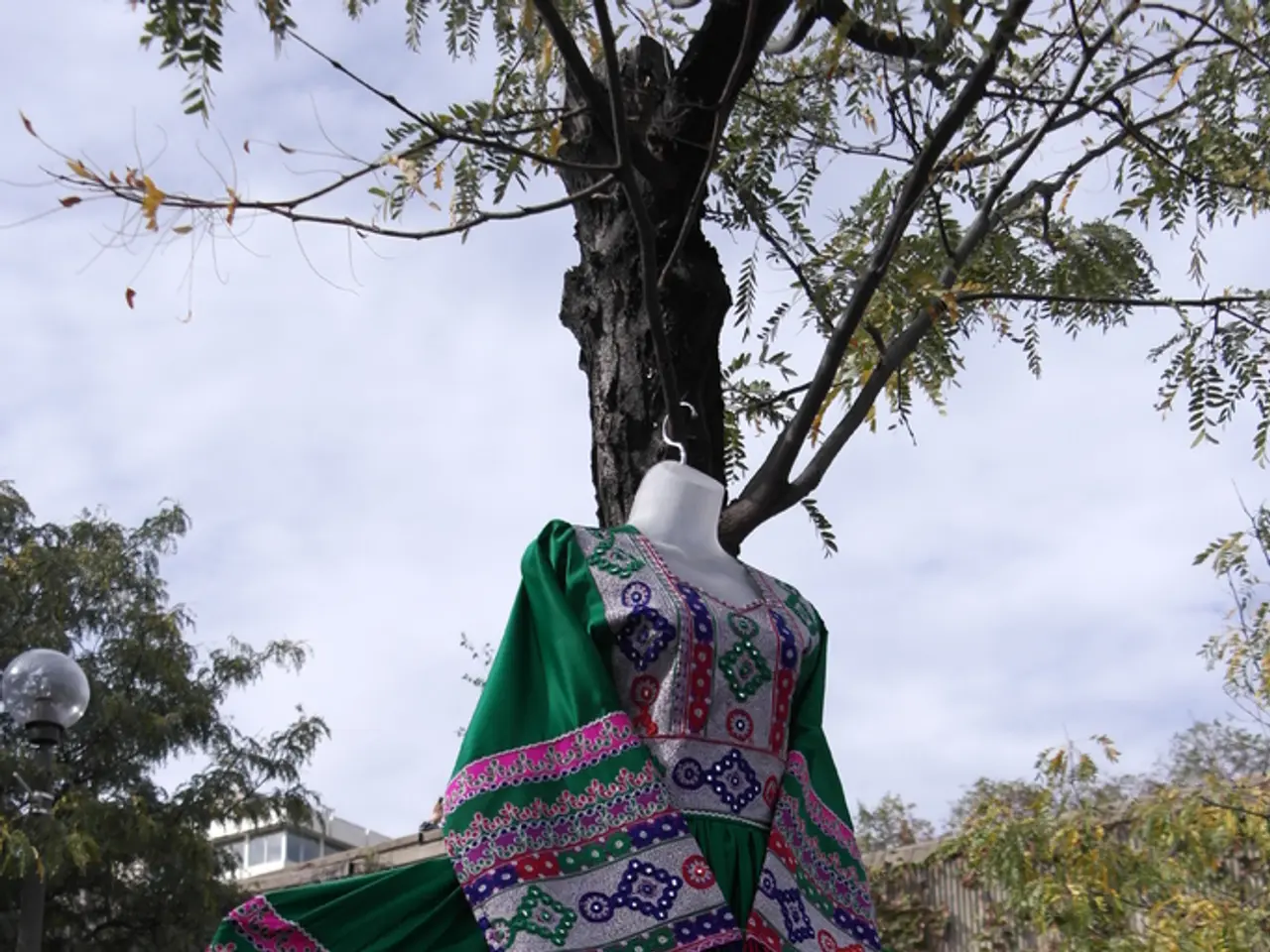A tailored abode in East London, emphasizing tiebacks, fringe, and decorative embellishments.
In the realm of textile design, a resurgence of an age-old craft is taking centre stage - Passementerie. This ancient art form, which encompasses the creation of trims, tassels, and decorative elements, has a rich history dating back centuries.
Originated in the 16th century, the term "passementerie" is thought to have originated in Flanders, where bobbin lace also evolved during the same period. Over the centuries, passementerie became a significant part of textile decoration, particularly in Europe, where it was used extensively for ornamental purposes in the 17th and 18th centuries.
Charles Frederick Worth, a renowned 19th-century fashion designer, played a significant role in the development of passementerie. His contributions included promoting new fabrics and trimmings, which helped revive the luxury textile industry in Paris. Worth's efforts, including stimulating the manufacture of embroidery and passementerie, became crucial for embellishing garments.
Fast forward to the modern era, and passementerie continues to be an essential aspect of textile design, albeit with evolving production methods. While traditional techniques are still cherished, contemporary artists and designers often incorporate modern materials and machinery to create innovative designs.
One such practitioner is Jessica Light, a UK-based artist whose work involves creating bespoke trims and tassels using traditional techniques along with modern creative elements. Light's trimmings often entwine unusual materials such as horsehair and textile remnants with beading or semi-precious stones, creating a unique blend of old and new.
Light's work has garnered attention from high-profile clients such as Vivienne Westwood, Christian Lacroix, and Burberry, to name a few. Her trimmings can also be found on tablecloths in Kenneth Branagh's 2022 film, Death on the Nile.
In addition to her passementerie practice, Light is a mentor for the Crafts Council's Hothouse Scheme and teaches her techniques at prestigious institutions like the British Museum and Winchester Art School. She founded the Trims and Tassels passementerie workshop in 2008, located in a converted 19th-century shoe factory in London's East End.
Passementerie, however, is now classified as an endangered heritage craft in the UK, with just five professionals left in the country. Despite this, Light is not only preserving the craft but also fashioning a future for it. Her recent venture, Wares, a bespoke spin-off, is a testament to her dedication to the craft's revival.
For those interested in learning more about Jessica Light's practice, reaching out to her directly or exploring local textile communities in the UK could provide more detailed insights into this fascinating art form. Prices for bespoke pieces range from £40 to £300 for a tieback, while trims cost £9-£200 per metre. Light's website, jessicalight.co.uk, is a valuable resource for those wanting to delve deeper into her work.
Passementerie is a vital component in the fashion-and-beauty industry, particularly in the creations of designers such as Jessica Light, who blends traditional techniques with modern creative elements. In the home-and-garden sector, bespoke trims and tassels from Light can also be found, evident in Kenneth Branagh's film, Death on the Nile.




